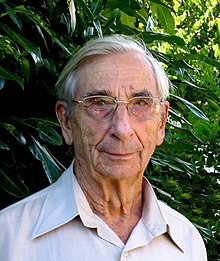The Telecommunication Portal

Telecommunication, often used in its plural form or abbreviated as telecom, is the transmission of information with an immediacy comparable to face-to-face communication. As such, slow communications technologies like postal mail and pneumatic tubes are excluded from the definition. Many transmission media have been used for telecommunications throughout history, from smoke signals, beacons, semaphore telegraphs, signal flags, and optical heliographs to wires and empty space made to carry electromagnetic signals. These paths of transmission may be divided into communication channels for multiplexing, allowing for a single medium to transmit several concurrent communication sessions. Several methods of long-distance communication before the modern era used sounds like coded drumbeats, the blowing of horns, and whistles. Long-distance technologies invented during the 20th and 21st centuries generally use electric power, and include the telegraph, telephone, television, and radio.
Early telecommunication networks used metal wires as the medium for transmitting signals. These networks were used for telegraphy and telephony for many decades. In the first decade of the 20th century, a revolution in wireless communication began with breakthroughs including those made in radio communications by Guglielmo Marconi, who won the 1909 Nobel Prize in Physics. Other early pioneers in electrical and electronic telecommunications include co-inventors of the telegraph Charles Wheatstone and Samuel Morse, numerous inventors and developers of the telephone including Antonio Meucci and Alexander Graham Bell, inventors of radio Edwin Armstrong and Lee de Forest, as well as inventors of television like Vladimir K. Zworykin, John Logie Baird and Philo Farnsworth.
Since the 1960s, the proliferation of digital technologies has meant that voice communications have gradually been supplemented by data. The physical limitations of metallic media prompted the development of optical fibre. The Internet, a technology independent of any given medium, has provided global access to services for individual users and further reduced location and time limitations on communications. (Full article...)
Selected article -

The Norwegian Public Safety Network (Norwegian: Nødnett literally Emergency Network) is a public safety network system based on Terrestrial Trunked Radio (TETRA). Nødnett is implemented by the Directorate for Emergency Communication (Norwegian: Direktoratet for nødkommunikasjon). The network is primarily used for internal and interdisciplinary communication by the police, fire departments and health services. Nødnett is also used by several organisations participating in rescue and emergency work. Planning of the network started in 1995 and in 2006 the contract to build it was awarded to Nokia Siemens Networks. As Nokia Siemens Networks was unable to complete the contract, it was passed on to Motorola Solutions in 2012. The critical infrastructure of Nødnett was finished and was operational in all districts of mainland Norway by December 1, 2015.
The network replaced nearly 300 local and regional networks which operated independently for the fire, police and healthcare agencies. Nødnett allows functionality such as authentication, encryption and higher reliability. (Full article...)General images
Things to do
 |
Here are some tasks awaiting attention:
|
Selected biography -
Did you know (auto-generated) -

- ... that Red Blanchard, the owner of Iowa radio station KSMN, commuted 800 miles (1280 km) by plane from Mason City each week to host a radio show in Chicago?
- ... that Dutch radio and TV presenter Hanneke Kappen presented the second Dutch radio show dedicated to heavy metal music?
- ... that Arnold Blackner was said to be the first person to sing over 3,000 miles (4,800 km) on the telephone?
- ... that for more than a decade, WNJC-FM at Northwest Mississippi Junior College was the state's only public radio station?
- ... that the sentencing phase of the Jemma Mitchell case was the second to be filmed in England and Wales since a change in the law permitted television cameras into court?
- ... that actor Tatsunari Kimura ate pancakes and drank coffee while talking for eight hours during the filming of the television drama Old-Fashioned Cupcake?
Related portals
Topics
Subcategories
Associated Wikimedia
The following Wikimedia Foundation sister projects provide more on this subject:
-
 Commons
Commons
Free media repository -
 Wikibooks
Wikibooks
Free textbooks and manuals -
 Wikidata
Wikidata
Free knowledge base -
 Wikinews
Wikinews
Free-content news -
 Wikiquote
Wikiquote
Collection of quotations -
 Wikisource
Wikisource
Free-content library -
 Wikiversity
Wikiversity
Free learning tools -
 Wiktionary
Wiktionary
Dictionary and thesaurus
-

-

-

-

-
Random portal
Purge server cache

















































































Recent Comments